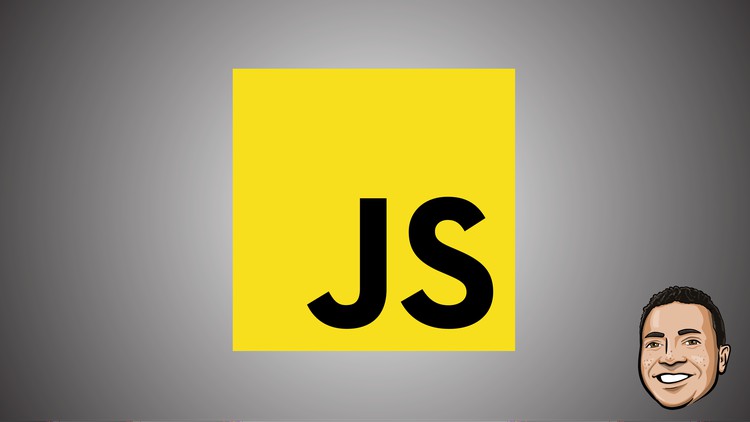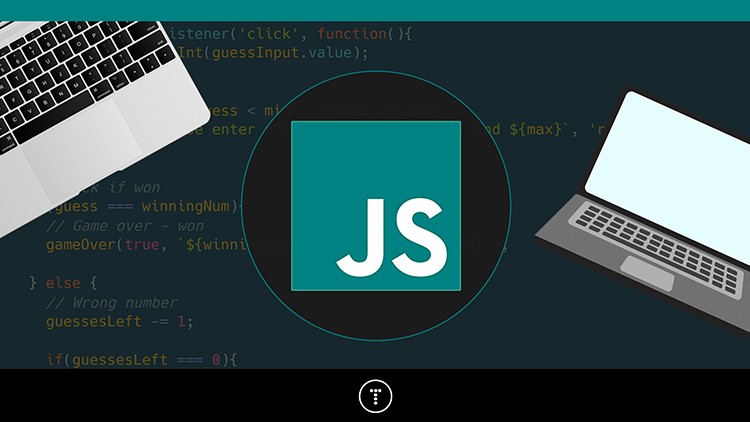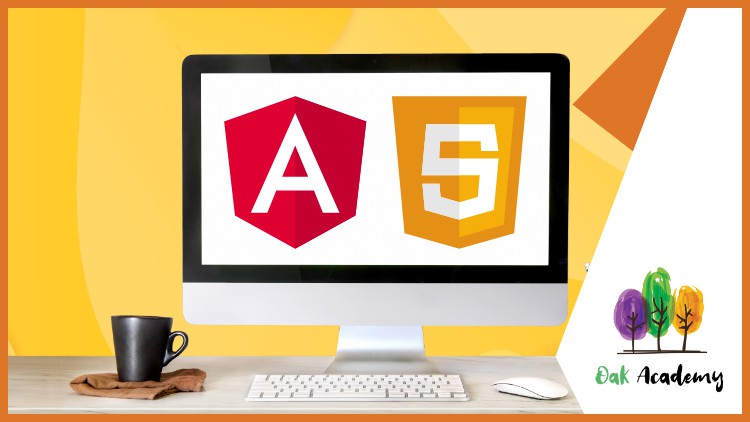Course overview
- Provider
- Udemy
- Course type
- Paid course
- Level
- All Levels
- Duration
- 22 hours
- Lessons
- 203 lessons
- Certificate
- Available on completion
- Course author
- Oak Academy
-
- What is conditional statements (if else, switch case, ternary operator), how to use
- What is loops (for loops, while loops, continue and break statements), how to use them
- How to create Arrays, Array methods (push, pop, shift, unshift ...), Array iteration
- What is DOM, how to manipulate DOM
- How to write Functions, what are the differences between Function Decleration and Function Expression
- What are variables, why are they used
- How to create Arrays, Array methods (push, pop, shift, unshift ...), Array iteration
- Fully understand the architecture behind an Angular application and how to use it
- Create single-page applications with one of the most modern JavaScript frameworks out there
- Write clean and elegant code like a professional developer
- Build real-world Angular applications on your own
- Become fluent in AngularJS terminology, such as dependency injection, services, directives, transclusion, and more.
- Design custom directives and save time and energy with easily reusable components.
- Dive into Nodejs, learn rapidy growing web server technology, Nodejs & understand how NodeJS works with Node course!
- By learning growing web server technology, Nodejs, you can improve your skills, get a new job and you can build powerful, robust web applications.
- Learn the key concepts of the NodeJS
- Learn to create servers, and understand how it works
- Understand and use the Event Emitter
- Understand Buffers, Streams, and Pipes
- Learn routing with NodeJS
- Learn the most used, open-source document database, and NoSQL database aka MongoDB
- Install MongoDB
- Logic behind the MongoDB data storage
- The most popular Object Data Modeling Library for MongoDB, Mongoose JS
- Learn to execute CRUD - write queries to create, read, update and delete operations
- Understand terminal commands for managing the database
- Advanced Features of MongooseJS
- The best testing framework for NodeJS, Mocha
- Learn how easy to use MongoDB
- JavaScript is a text-based computer programming language used to make dynamic web pages.
- A must-learn for aspiring web developers or programmers, JavaScript can be used for features like image carousels, displaying countdowns and timers, and playing
- What is JavaScript? JavaScript is a curly-braced, dynamically typed, prototype-based, object-oriented programming language.
- JavaScript is the programming language that allows users to interact with the websites that they're visiting.
- React vs. Angular vs. Vue: what is the best JavaScript framework? Choosing the best JavaScript framework for your web project depends on what you are lookingfor
- Angular is a framework that makes data binding easy so that you can template an application faster.
- With all of the different JavaScript IDEs available, the best option depends on how you intend to use it, along with your personal preferences.
- Angular is an open-source, client-side framework for building single-page websites and desktop and mobile applications.
- It is a full-featured JavaScript application built on TypeScript, which operates across platforms and keeps code clean and consistent throughout the codebase.
- Full stack web development with javascript angular, typescript
- Front end web development with angular, javascript with angular
Description
Hello there,
Welcome to the "JavaScript & Angular with Hands-on Examples" course.
JavaScript (JS) libraries such as React, Angular, Node with my hands-on JavaScript (JS) and Angular course.
JavaScript is the number one programming language for internet applications.
Angular is one of the most modern, performance-efficient, and powerful frontend frameworks you can learn as of today. It allows you to build great web apps that offer awesome user experiences! Learn all the fundamentals you need to know to get started developing Angular applications right away.
Angular is the next big deal. Being the successor of the overwhelmingly successful Angular.js framework it’s bound to shape the future of frontend development in a similar way. The powerful features and capabilities of Angular allow you to create complex, customizable, modern, responsive, and user-friendly web applications.
Node.js is an open-source, cross-platform, back-end, JavaScript runtime environment that executes JavaScript code outside a web browser. By learning growing web server technology, NodeJS, you can improve your skills, get a new job and you can build powerful, robust web applications.
MongoDB is a cross-platform document-oriented NoSQL database program. By using MongoDB, you can build a modern application database for your projects.
We'll design custom services, build custom directives, understand two-way binding, design a weather forecast app as a single page application, and lots more. Both starter and finished source code is provided as we go.
This course is for beginners. Before taking this course, you only need to have a basic knowledge of HTML and CSS. In our course, the basics of JavaScript are dealt with in detail and students are provided to test what they have learned with code quizzes prepared for each subject.
During our course, you will be informed about the basics of JavaScript in detail and how to solve problems.
Here's how a JavaScript code works, not just how it works. Because in today's JavaScript world, besides writing a code, you need to know how to debug this topic and be able to read every written JavaScript code.
The most important feature that distinguishes this course from the others is that it deals with the most basic issues about JavaScript in detail and helps students to put what they have learned in theory into practice.
In our course, you can test what you have learned on both MAC and Windows computers. You do not need to purchase any tools or applications as free tools and platforms are used.
During the course, I made sure to explain all the topics that may seem complicated to you in as simple and detailed as possible. I have used some diagrams to help you understand better.
When you complete the course, you will learn;
How you can operate on variables,
Boolean logic,
How to create a conditional statement,
How you can perform transactions with Loops,
How a function is created and why it needs arguments,
How Arrays and Objects, which are basic data structures, are created,
How DOM Manipulation is done,
You will have learned and have the opportunity to test what you have learned with the code quizzes in our course.
Which architecture Angular uses
How to use TypeScript to write Angular applications
All about directives and components, including the creation of custom directives/ components
How databinding works
All about routing and handling navigation
What Pipes are and how to use them
How to access the Web (e.g. RESTful servers)
What dependency injection is and how to use it
How to use Modules in Angular
You'll learn how asynchronous code works in Node and the Node event loop, as well as how to use the event emitter, streams, buffers, pipes, and work with files.
We'll see how that leads to building a web server in Node with hands-on examples.
The logic behind MongoDB’s data storage
The most popular Object Data Modeling Library for MongoDB, Mongoose JS
Writing queries for creating, reading, updating, and deleting operations
Advanced Features of MongooseJS
The best testing framework for NodeJS, Mocha
Angular
Javascript framework Angular
Javascript Angular
Angular Javascript
Step-by-Step Way, Simple and Easy With Exercises
What is JavaScript?
JavaScript is a curly-braced, dynamically typed, prototype-based, object-oriented programming language. It started as the programming language for the web and is one of the three layers of standard web technologies — the other two being HTML and CSS. JavaScript allows you to create and control content dynamically on a web page without requiring a page reload. Web browsers are able to interpret it, and when triggered by events, modify the HTML and CSS of a web page with dynamic updates. JavaScript also uses asynchronous calls to fetch data from web services in the background. Although it was initially only used in web browsers, JavaScript engines have since been put to use as servers with Node.js, included in desktop application frameworks like Electron, and embedded in phone frameworks like Apache Cordova.
Why is JavaScript important?
JavaScript is the programming language that allows users to interact with the websites that they're visiting, making it a very important language for web developers to know. In the past, most developers focused on the backend; JavaScript was only relevant when they needed to use visual effects. As web development evolved and the focus shifted towards user experience, programmers started to rely on JavaScript for their frontend code heavily. Today, most sites use JavaScript to fetch and submit data, use logic, and generate HTML in browsers. JavaScript can also communicate asynchronously with data servers in the background without interrupting the user interaction in the foreground. These features make JavaScript not only an important language but a necessary language for modern web development.
What are the main uses of JavaScript?
JavaScript is a text-based programming language used for client- and server-side development. Web developers have used JavaScript since its inception to add simple interactivity to web pages like modals, animated elements, or image slideshows. While that is still one of its primary uses, Javascript has evolved to building complete web applications. SPAs, or single page applications, depend on JavaScript-based frameworks like React, Angular, and Vue to bring a desktop-like application experience to the browser. However, it's important to note that web browsers aren't places that make good use of the programming language. Javascript is also popular for building web services and back-end infrastructure with Node.js. React Native, Xamarin, Ionic, and NativeScript frameworks use JavaScript for developing phone apps as well.
React vs. Angular vs. Vue: what is the best JavaScript framework?
Choosing the best JavaScript framework for your web project depends on what you are looking for. React is a popular framework, which means you will find a lot of community support if you need help. It is also considered relatively easy to learn but is being developed at a rapid pace. Angular is a framework that makes data binding easy so that you can template an application faster. It also uses the RxJS library to simplify asynchronous programming and Typescript (which compiles to JavaScript) for a cleaner, less error-prone development process. Some cons of Angular are that it can have a steep learning curve and can be complex. Vue is a lightweight framework, so it is easy to learn, very performant, and flexible. Some cons of Vue are limited plugins, and its flexibility can lead to irregular code.
What is Angular and what are its benefits?
Angular is an open-source, client-side framework for building single-page websites and desktop and mobile applications. It is a full-featured JavaScript application built on TypeScript, which operates across platforms and keeps code clean and consistent throughout the codebase. Angular is an all-in-one rapid application development platform that allows web pages to render efficiently by minimizing communication with servers. The Angular framework offers end-to-end tooling or routing, state management, and form validation, as well as dependency injection and declarative templates. Angular offers out-of-the-box functionality and easy updating, along with an extensive collection of pre-made components. The TypeScript base includes high-quality code that reduces the burden of debugging and allows multiple developers to collaborate across platforms with minimal disruption and less coding.
Is learning Angular hard?
Angular is a complex application that contains multiple libraries and cross-platform functionalities, so it can take some time to learn its many features. Angular’s learning curve depends partly on your previous knowledge of web development and your familiarity with the languages used in the Angular platform. If you’re new to Angular, it’s helpful to have some familiarity with the basics of web design and the essentials of HTML and CSS. It’s also useful to know about the other languages that make up the Angular framework. These include basic HTML and CSS, as well as ECMAScript6, or ES6, a general programming language designed to ensure interoperability of web pages across the Internet. It’s also helpful to understand TypeScript, a superset of JavaScript used to write Angular. Learning Angular is even easier if you’re familiar with JavaScript, which is an implementation of ES6 and Angular’s base language.
What is Angular used for?
Developers mainly use Angular to build dynamic single-page applications (SPAs) for web, mobile, and desktop. SPAs are web pages based on a single HTML file that is completely controlled by JavaScript. When an action such as clicking a button happens on the page, the code renders it on the page instantly without sending a new request to the server. TypeScript and Angular’s other tools, including routing, state management, and ROM validation, make SPA creation easy and fast. Its open-source JavaScript framework allows developers to reuse code across multiple platforms. Angular’s component-based architecture simplifies the development workflow, making it possible to design apps for deployment in a wide range of environments and update them without extensive recoding.
What is the difference between Angular and React?
Angular and React are both rapid application development (RAD) platforms based on JavaScript. Angular is a multilayered framework that runs on Typescript and is compatible with many different code editors. It is a full-featured web development platform that requires no additional libraries. This means Angular can independently carry out a full range of development functions such as data binding, form validation, and dependency injection. First introduced in 2013, React is a JavaScript library managed by Facebook, and it works for both single- and multi-page web applications. React is a framework for UI development that’s smaller and faster than Angular. However, it requires other libraries or modules to provide the full range of Angular’s functions. React is easy to install and use for anyone who already knows JavaScript, and because it operates with a virtual DOM, the browser load reduces. Angular operates with a real DOM, which leads to longer runtimes and slower performance.
Video and Audio Production Quality
All our videos are created/produced as high-quality video and audio to provide you the best learning experience.
You will be,
Seeing clearly
Hearing clearly
Moving through the course without distractions
You'll also get:
Lifetime Access to The Course
Fast & Friendly Support in the Q&A section
Udemy Certificate of Completion Ready for Download
Dive in now to our JavaScript & Angular with Hands-on Examples course
We offer full support, answering any questions.
See you in the course!
Similar courses

-
12 hours
-
88 lessonsCertificate

-
69 hours
-
319 lessonsCertificate


